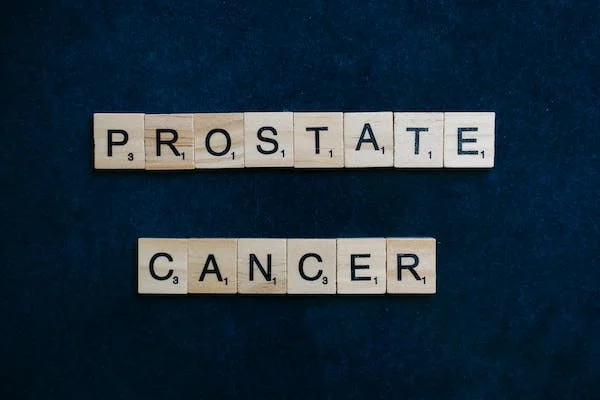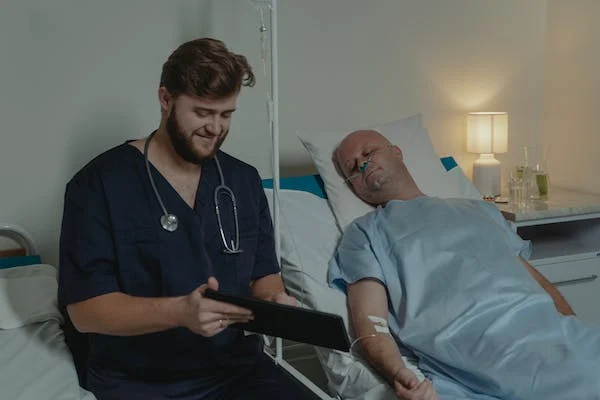Demystifying Menace of Prostate Cancer: Living a Fulfilling Life through 5 Super Food Choices
Prostate cancer

Prostate cancer is considered a common type of cancer which is prevalent among males. Each year, close to 200,000 Americans receive a diagnosis of prostate cancer as prostate cancer is highly treatable even then 1 out of 44 prostate cancer patient die.

According to American Cancer Society, there are estimated 2,99,010 new cases will report in 2024 and estimated may reach up to 35,250.
It commence from prostate gland which is located in between bladder and penis. Although, the accurate reasons are still under researches yet threat of it increase with increasing age.
About one in nine people with a prostate will receive a prostate cancer diagnosis during their lifetime. But the reality is the prostate cancer can and does affect men of all backgrounds and lifestyles.
What is prostate cancer?
Cancer is a term which we use for an abnormal growth of cells anywhere in the body and typically a lot of our focus is on cells with the potential to spread, to metastasize to other parts of the body. Prostate is one of important part of reproductive system of males.
This is actually becoming a pretty important question in prostate cancer because there are those of us that are starting to ask the question whether we should even be using the word cancer for some of the lower-grade prostate cancers.
Prostate functions
The prostate perform certain functions which includes production of specific fluid which is responsible in sperm transportation and its nourishment, helps in secretion of prostate specific antigen and manage urination.
Understanding prostate cancer
Prostate cancer, of course, is a cancer that starts in the prostate, which is the organ sitting between the bladder and the urethra in front of the rectum.
It’s a reproductive organ whose purpose is to make some of the fluid that’s surrounding the sperm and to help push seminal fluid forward at the moment of ejaculation so it is considered as a reproductive organ.
Cells of prostate cancer have the tendency to spread in other body parts. Most typically the bones which may carry prostate cancer cells. This is an important concept that sometimes does cause confusion.
It is not bone cancer it’s still prostate cancer and still typically responds to treatment.
Prostate cancer reflects a combination of genetics, genes that you’re born with, that you inherited from your parents, and a host of environmental factors that we’re still sorting out like Dietary factors, smoking, chronic stresses, and exercise.
Some of these environmental factors are controlled, but many are not. There are a substantial proportion of cancers that we ultimately just say are bad luck. They are stochastic.
They come from radon in the soil; cosmic ray is things that we really have no control over. Prostate cancer is extremely common. It is by far the most common cancer that men get in the US over a quarter million diagnoses a year.
It’s the second most common cause of cancer death among men in this country and has been for many years.
Prostate cancer mortality rates, death rates have fallen very substantially since start of screening with PSA (prostate-specific antigen) in the early 1990s.
The mortality rate has fallen nearly 50 percent over the 20 years after PSA clinical practice.
It’s the steepest decline which is witnessed for any cancer with the exception of lung cancer. Lung cancer decline is largely attributable to smoking cessation efforts and fewer cigarettes around the country.
If we do not cure these, these would spread to cause metastasis, progression, and ultimately mortality.
Prostate Cancer Symptoms
Early stage prostate cancer rarely causes symptoms, but as the disease progresses, one may experience certain warning signs. Knowing the symptoms of prostate cancer will in keeping an eye out for any concerning changes in health.
Keep in mind, though, these symptoms do not indicate trouble with prostate.
And in fact, most all of them come standard with aging.
But if one experience several symptoms or have other concerns, it may be a good idea to visit an urologist.
- Males might experience a slow or weak urine flow, or urine flow might start and stop beyond ability to control it. It happens due to age factor.
- A rare but early sign of prostate trouble is unexplained pain in the area of prostate, especially while sitting down. This could also indicate a prostate infection, but only urologist can say for certain.
- A tumor on the prostate can put pressure on bladder and urethra, so take note if start to feel a frequent and sometimes urgent need to urinate, especially at night.
- One might also feel pain or a burning sensation when urinate, a condition known as dysuria. This condition is most commonly associated with urinary tract infections, but it can sometimes be a sign of prostate cancer.
- One could experience a loss of bladder control. As well as problems controlling bowel movements.
- It may hurt while ejaculation, or may not be able to keep an erection. And one may notice blood in semen or urine.
- Finally, as prostate cancer progresses, it may cause pain in lower back, hips or chest. As well as numbness in legs or feet.
If prostate extends and become mature then following symptoms may arise:
- Pain in bones
- Tiredness
- Weight loss
Prostate cancer treatment
Those at intermediate to high risk do well with whole gland treatment, surgery, or radiation therapy, or sometimes a combination.
Those with high-risk disease often do best with multi-modal treatment, meaning, in some cases, surgery followed by radiation or radiation with aggressive hormonal therapy.
Some cancers are already metastatic and these were men who will start with systemic therapy, hormonal therapy in many cases, augmented by chemotherapy or other novel treatments.
So, if the cancer spread out throughout the body then the treatment may become really critical and may take the following options:
- Immunotherapy
- Chemotherapy
- Radiations
- Hormonal therapy
- Targeted therapy
Fertility after the treatment may become really compromised therefore if one is ken to expand family after treatment then one must discuss it with their doctor before treatment.
Who is at high-risk for prostate cancer?
The risk of prostate is present in all men irrespective of race and ethnicity. However, there are some known risk factors associated with it:
- Age is second most important factor.
- Smoking and obesity has also the impact on risk f encountering prostate.
- Family history and genetics are considered as very strong risk factors because if any blood relations have encountered it then the risk may increase 2-3 times.
- Researches reveal that excessive fat diets may also leads towards prostate cancer.
Although, further research is needed but there are some other factors as well which may increase the risk of prostate like:
- Smoking
- Alcohol consumption
- Prostate inflammation
- Obesity
- Sexually transmitted infections
- Regular exposure to herbicides
How you can lower your risk?
The following tactics may help in lowering down the risk of prostate.
- Get regular prostate screenings
- Maintain a healthy weight
- Exercise regularly
- Eat a nutritious diet
- Quit smoking
Prostate cancer is a serious disease, but early detection is the key. Talk to doctor about risk factors and when or if it should be screened for prostate cancer, sometimes as early as age 40.
When prostate cancer is diagnosed before it spreads to other parts of the body, about 97% of people live at least five years after diagnosis. So pay attention to prostate. It may be small, but knowing the warning signs can benefit health in a big way.
Supporting Foods against Prostate Cancer
Balanced diet and healthy food is the predetermining for better health and wellbeing. Although, cure is not in food however food may help in prevention. Therefore, there are some food options which may reduce the risk of the prostate cancer exposure. The food options are as follows:
- Cruciferous vegetables like broccoli, kale, Brussels, turnips, cauliflower and bok choy.
- Grains like quinoa, rice and barley.
- Tomatoes are considered important as well in prevention because they contain antioxidants like lycopene.
- Carotenoid rich vegetables and fruits like carrots, oranges, cantaloupes, sweet potatoes and dark green leafy vegetables.
- Beans and legumes like lentils, soybeans, peanuts and carob.
Conclusion
Prostate cancer is really a big problem for males and its risk continues to rise as age increases. There are some other risk factors as well like diet and hereditary factors. However, it can be treated if identified in early stages because as it progresses it may also affect other organs as well.
The treatments depend upon the stage and severity. Treatment options may include radiations, hormonal therapy, targeted therapy, chemotherapy and immunotherapy.
Finally, it is pertinent to note that if the signs and symptoms of prostate are shown one must visit doctor instantly and get treatment because if it remains unaddressed it may cause serious problems.
FAQs
What is prostate cancer?
Prostate cancer is considered a common type of cancer which is prevalent among males.
What are symptoms of prostate cancer?
Pain, problem in urination, burning sensation and less bladder control.
How prostate cancer could be prevented?
Through precautions and regular screening.






